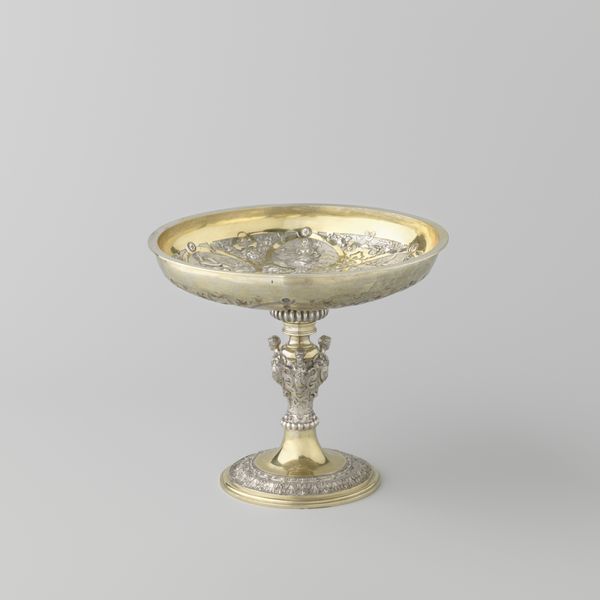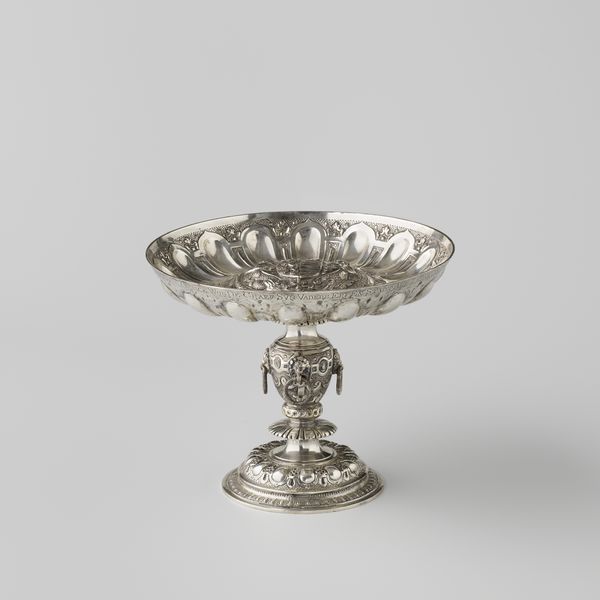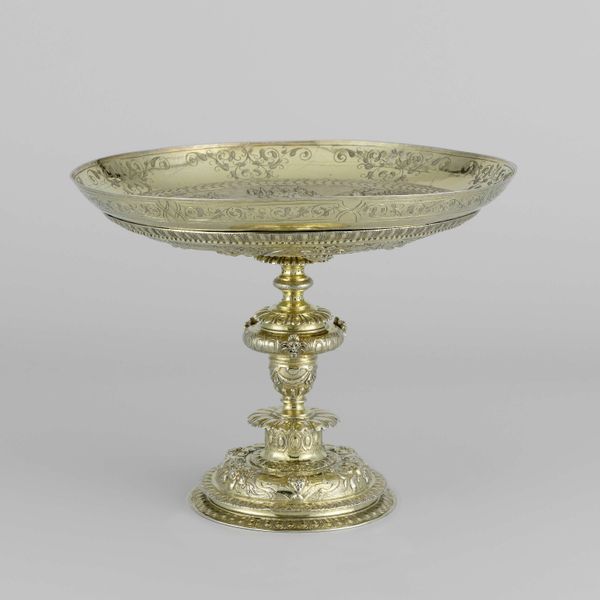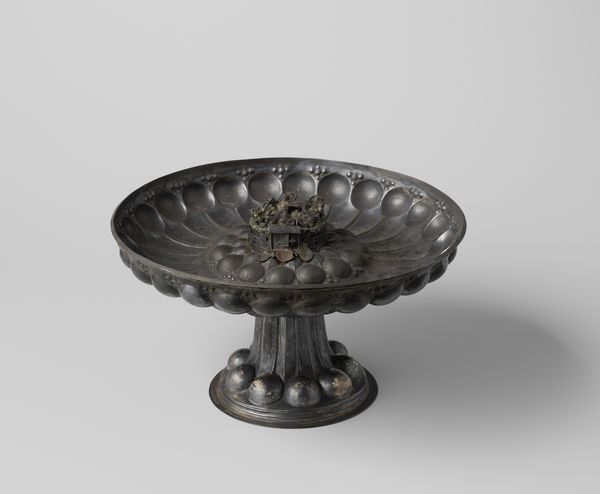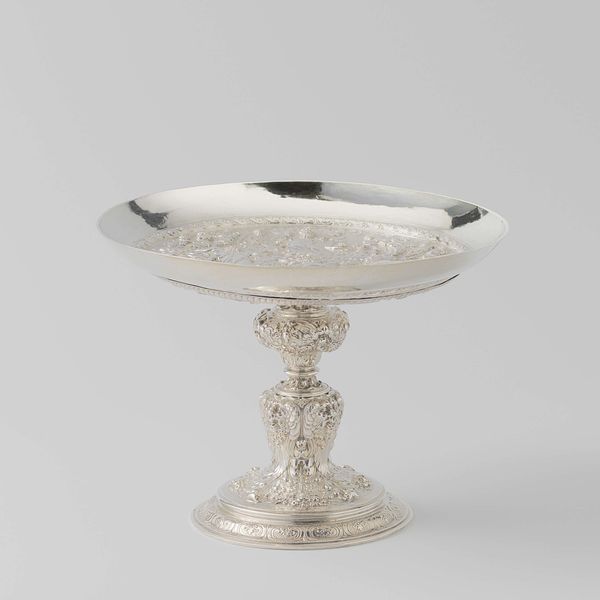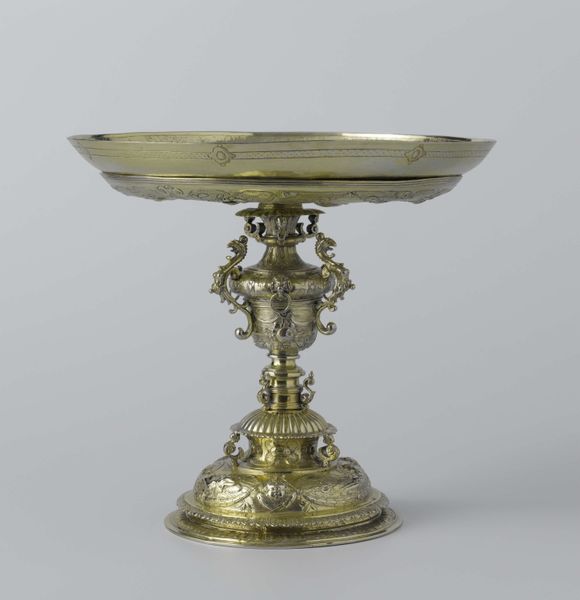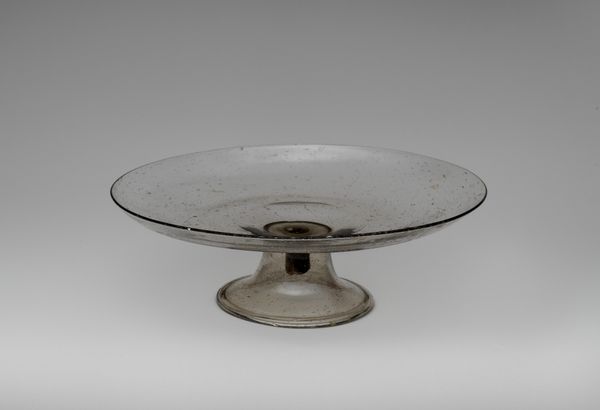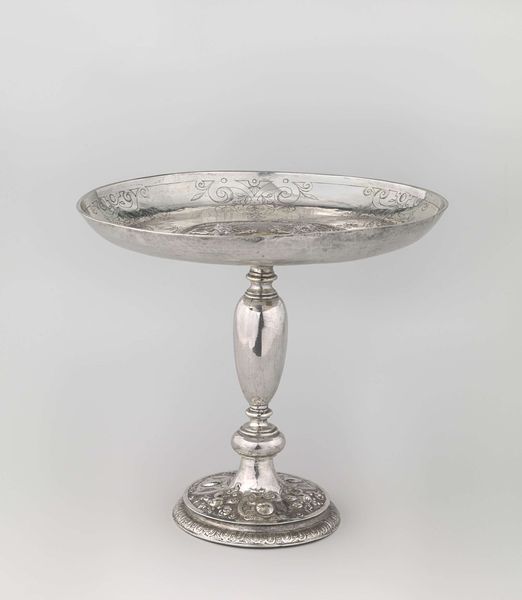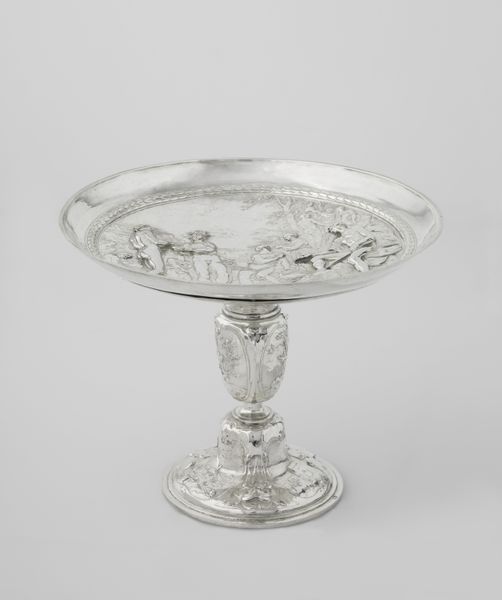
Galvanoplastische reproductie van een tazza met een voorstelling van een schip 1881
0:00
0:00
elkingtonco
Rijksmuseum
silver, metal
#
3d sculpting
#
circular oval feature
#
3d model
#
silver
#
3d printed part
#
rounded shape
#
metal
#
jewelry design
#
virtual 3d design
#
round design
#
3d shape
#
metallic object render
#
decorative-art
Dimensions: height 15 cm, diameter 18 cm
Copyright: Rijks Museum: Open Domain
Curator: Looking at this ornate piece, a galvanoplastic reproduction of a tazza depicting a ship, created in 1881 by Elkington & Co., I am struck by its cold beauty. Editor: Cold is right. It feels austere, almost like a monument. But the silvery sheen gives it a delicate quality too. I want to know what the conditions were for the laborers that helped to create it. Curator: Indeed, the historical context is rich. This type of object was part of a broader 19th-century trend where electrotyping allowed for reproduction of precious objects for a wider audience, blurring lines between art and commodity. But let’s talk about who had access to these commodities during a time of imperial conquest. Editor: Exactly! And think about the resources needed. Where did this silver originate, and what exploitative colonial structures facilitated its extraction and processing? It presents this polished exterior, but at what cost? Curator: It's a vital question. And this notion of imitation also brings forward concepts of authenticity, class, and cultural capital in that period. By replicating something supposedly "valuable," you inadvertently highlight what makes the original unique, which reinforces systems of wealth and status. It evokes complex notions of authenticity. Editor: This tazza stands as evidence to both the democratization of luxury through the industrial process of galvanoplasty and the exploitation behind access to materials during imperialism. How can one appreciate artistry without acknowledging material circumstances that brought these artifacts to light? Curator: Perhaps through raising those very questions. By situating objects within their network of social and material relations, we make tangible connections to global economies and labor conditions across time. It’s about tracing those colonial routes embedded in an object like this. Editor: So in the end, it's more than just something shiny; it mirrors inequalities. And that's the beauty of material analysis—it exposes uncomfortable truths that a purely aesthetic experience might obscure. Curator: I agree. This piece then prompts introspection about production, consumption, access, and power as integral factors of artistic expression across time.
Comments
No comments
Be the first to comment and join the conversation on the ultimate creative platform.
